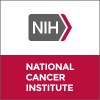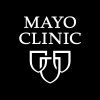
Phase I Study of Anti-CD22 Chimeric Receptor T Cells in Patients With Relapsed/Refractory Hairy...
Hairy Cell LeukemiaHairy Cell Leukemia VariantBackground: CAR (Chimeric Antigen Receptor) T cell therapy is a type of cancer treatment in which a person s T cells (a type of immune cell) are changed in a laboratory to recognize and attack cancer cells. Researchers want to see if this treatment can help people with hairy cell leukemia (HCL). Objective: To test whether it is safe to give anti-CD22 CAR T cells to people with HCL. Eligibility: Adults ages 18 and older with HCL (classic or variant type) who have already had, are unable to receive, or have refused other standard treatments for their cancer. Design: Participants will be screened with the following: Medical history Physical exam Blood and urine tests Biopsy sample Electrocardiogram Echocardiogram Lung function tests Imaging scans Some screening tests will be repeated during the study. Participants may need to have a catheter placed in a large vein. Participants will have magnetic resonance imaging of the brain. Participants will have a neurologic evaluation and fill out questionnaires. Participants will have leukapheresis. Blood will be removed from the participant. A machine will divide whole blood into red cells, plasma, and lymphocytes. The lymphocytes will be collected. The remaining blood will be returned to the participant. Participants will get infusions of chemotherapy drugs. Participants will get an infusion of the anti-CD22 CAR T cells. They will stay at the hospital for 14 days. Then they will have visits twice a week for 1 month. After treatment, participants will be followed closely for 6 months, and then less frequently for at least 5 years. Then they will have long-term follow-up for 15 years.

A Study of JNJ-75276617 in Participants With Acute Leukemia
Acute LeukemiasAcute Myeloid Leukemia1 moreThe purpose of this study is to determine the recommended Phase 2 dose(s) (RP2D[s]) of JNJ-75276617 in Part 1 (Dose Escalation) and to determine safety and tolerability at the RP2D(s) in Part 2 (Dose Expansion).

Inqovi Maintenance Therapy in Myeloid Neoplasms
Myelodysplastic SyndromesChronic Myelomonocytic Leukemia1 moreThis research is being done to see if the drug Inqov is effective in reducing the chance of myelodysplastic syndrome (MDS) or chronic myelomonocytic leukemia (CMML) relapsing after standard of care stem cell transplant. This research study involves the study drug Inqovi, which is a combination of the drugs decitabine and cedazuridine.

A Study to Evaluate VIP152 in Subjects With Relapsed/Refractory Chronic Lymphocytic Leukemia or...
Relapsed Non Hodgkin LymphomaChronic Lymphocytic Leukemia5 moreDetermine the safety, tolerability, pharmacokinetics, maximum tolerated dose (MTD) and recommended phase 2 dose (RP2D) of VIP152 in patients with Chronic Lymphocytic Leukemia (CLL) or Richter Syndrome

A Study of Ruxolitinib and Duvelisib in People With Lymphoma
T-cell LymphomasNK-Cell Lymphomas2 moreThis study will test the safety of ruxolitinib, given at one dose that does not change, and duvelisib, given at different doses, to find out what effects, if any, the study treatment has on people with relapsed or refractory NK-cell or T-cell lymphoma.

Evaluation of CPX-351 Monotherapy in Acute Myeloid Leukemia Secondary to Myeloproliferative Neoplasm...
Acute Myeloid LeukemiaMyeloproliferative SyndromeThe three classic myeloproliferative neoplasms (MPNs) include polycythemia Vera (PV), essential thrombocythemia (ET) and primary myelofibrosis (PMF). The natural history of these MPNs is the possible progression to acute myeloid leukemia (MPN-blast phase) at variable percentage depending the entity. Leukemic transformation of MPN occurs in 8% to 23% of primary myelofibrosis (PMF) patients in the first 10 years after diagnosis and in 4% to 8% of polycythemia vera (PV) and essential thrombocytosis (ET) patients within 18 years after diagnosis. The risk for leukemic transformation is increased by exposure to cytotoxic chemotherapy. The molecular pathogenesis of MPN-blast phase remains an area of active research. The prognosis of blast phase MPNs is very poor : approximately 50% of the patients are deemed eligible for intensive treatment (ie. conventional induction chemotherapy regimen with anthracyclines and cytarabine). The patients who are not fit for such intensive treatment approach due to age or comorbidities, are treated with Hypomethylating agents, low dose palliative chemotherapy, or supportive care. Nevertheless, there is a need for more effective and better tolerated treatment approaches in order to increase the response rate and hence, the transplant rates which should translate into improved survival. CPX-351 is a new formulation of cytarabine and daunorubicin encapsulated at a fixed 5:1 molar-ratio in liposomes that exploits molar ratio-dependent drug-drug synergy to enhance antileukemic efficacy. Based on similarities between post-myelodysplastic syndrome (MDS) and post-MPN secondary AML in terms of disease resistance to chemotherapy, of fragile patient profile, The hypotheses made is that CPX-351 may improve the results of induction chemotherapy without increasing its toxicity and therefore may increase the proportion of patients who could benefit from an allogeneic Stem Cell Transplantation (SCT).

Clinical Research for Azacitidine Combined With Low-dose Dasatinib in Maintenance Therapy of Acute...
Acute Myeloid LeukemiaThis project is a prospective, single-center study to evaluate the efficacy, safety and related mechanisms of azacitidine combined with low-dose dasatinib in maintenance therapy in patients with intermediate and high-risk acute myeloid leukemia(AML). The patients were randomly divided into azacitidine group and azacitidine combined with low-dose dasatinib group. The overall survival and disease-free survival were taken as the main end points, and the mortality and recurrence rate were taken as the secondary end points, meanwhile, the incidence of adverse events were evaluated. At the same time, the mRNA expressions of DNA methyltransferase (DNMT1, DNMT3a, DNMT3b), tumor suppressor genes (TP53, P15, P16, P21, CDH1, DOK6, SHP1, PTPN11) and differentiation genes (pu.1, C/EBP α, C/EBP β) were detected. Pyrophosphate sequencing was used to detect the methylation level of the promoter region of these tumor suppressor genes. Western Blot was used to detect apoptosis proteins (caspase3, caspase8) and phosphorylated proteins (pSTAT3, pSTAT5, pAKT). The proportion of apoptotic population of bone marrow cells was determined by flow cytometry. Therefore, the data in this study will reflect the efficacy and safety of azacitidine or azacitidine combined with low-dose dasatinib in real-world maintenance therapy in patients with medium and high-risk AML.

A Pilot Study on Intermittent Ibrutinib in Patients With Advanced-phase Chronic Lymphocytic Leukemia...
Chronic Lymphocytic LeukemiaSmall Lymphocytic LymphomaIbrutinib, an inhibitor of Bruton´s tyrosine kinase (BTK) is approved in CLL as continuous, daily administration of 420 mg orally until progression. Ibrutinib drug costs in health care are rapidly increasing and are difficult to predict, as long-term follow up analyses have shown that many patients remain on therapy for several years, in some cases even many years. It has been observed that patients who stop ibrutinib due to side effects may often remain with continued CLL disease control i.e. in stable partial remission even when off ibrutinib therapy. There are also emerging data on mutations within BTK, with loss of efficacy of ibrutinib, during long-term continuous administration. These observations raise the question whether alternative dosing strategies may be feasible. This pilot study will explore intermittent and repeated dosing of ibrutinib, until alternative therapy is required due to resistance or intolerance to ibrutinib. An "ON-OFF" dosing strategy will be applied, where advanced-phase CLL patients who have received at least 6 months of ibrutinib and who have achieved a stable PR will stop ibrutinib and be followed off therapy until clinical progression, at which ibrutinib will be re-instituted. Such "ON-OFF" ibrutinib cycles may be repeated until non-tolerability or resistance, or need of continuous dosing of ibrutinib (i.e. early progression when off the drug). If successful, the study will indicate a way forward towards reducing ibrutinib drug costs in health care without affecting long-term disease control, possibly also with fewer ibrutinib-related side effects due to a lower cumulative dose of ibrutinib. Long-term effects on potential mutations within BTK and its downstream signaling molecules will also be analysed.

Study of Selinexor and Venetoclax in Combination With Chemotherapy in Pediatric and Young Adult...
Acute Leukemia of Ambiguous Lineage in RelapseAcute Myeloid Leukemia3 moreThe purpose of this study is to test the safety and determine the best dose of venetoclax and selinexor when given with chemotherapy drugs in treating pediatric and young adult patients with acute myeloid leukemia (AML) or acute leukemia of ambiguous lineage (ALAL) that has come back (relapsed) or did not respond to treatment (refractory). Primary Objective To determine the safety and tolerability of selinexor and venetoclax in combination with chemotherapy in pediatric patients with relapsed or refractory AML or ALAL. Secondary Objectives Describe the rates of complete remission (CR) and complete remission with incomplete count recovery (CRi) for patients treated with selinexor and venetoclax in combination with chemotherapy at the recommended phase 2 dose (RP2D). Describe the overall survival of patients treated at the RP2D. Exploratory Objectives Explore associations between leukemia cell genomics, BCL2 family member protein quantification, BH3 profiling, and response to therapy as assessed by minimal residual disease (MRD) and variant clearance using cell-free deoxyribonucleic acid (DNA) (cfDNA). Describe the quality of life of pediatric patients undergoing treatment with selinexor and venetoclax in combination with chemotherapy and explore associations of clinical factors with patient-reported quality of life outcomes. Describe the clinical and genetic features associated with exceptional response to the combination of venetoclax and selinexor without the addition of chemotherapy.

CD19-Directed CAR-T Cell Therapy for the Treatment of Relapsed/Refractory B Cell Malignancies
Recurrent B-Cell Non-Hodgkin LymphomaRecurrent Chronic Lymphocytic Leukemia6 moreThis phase I trial studies the effects of CD-19 directed chimeric antigen receptor (CAR)-T cell therapy for the treatment of patients with B cell malignancies that have come back (recurrent) or have not responded to treatment (refractory). CD-19 CAR-T cells use some of a patient's own immune cells, called T cells, to kill cancer. T cells fight infections and, in some cases, can also kill cancer cells. Some T cells are removed from the blood, and then laboratory, researchers will put a new gene into the T cells. This gene allows the T cells to recognize and possibly treat cancer. The new modified T cells are called the IC19/1563 treatment. IC19/1563 may help treat patients with relapsed/refractory B cell malignancies.
